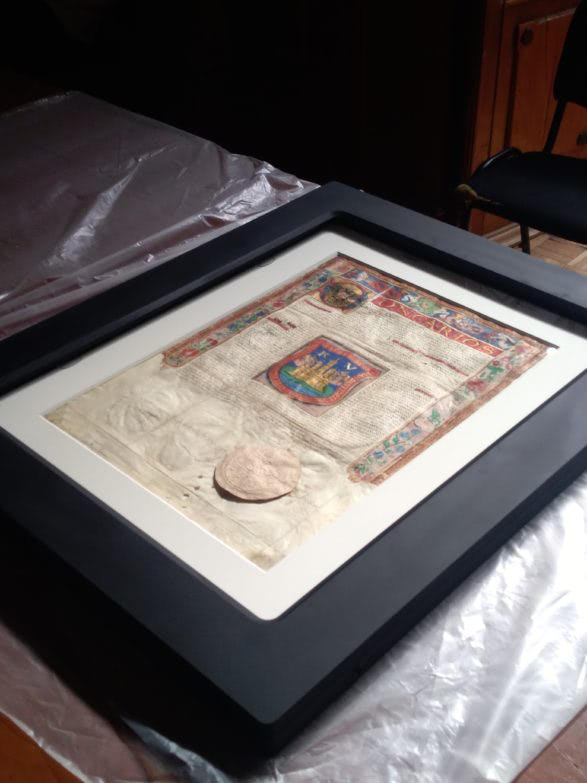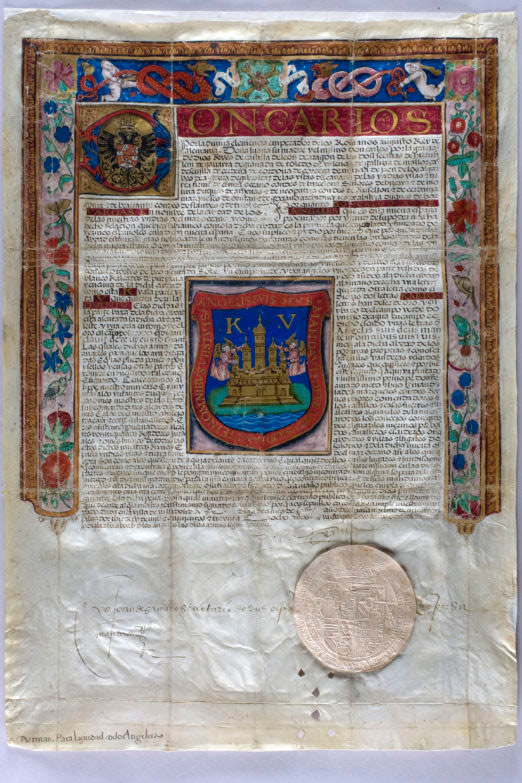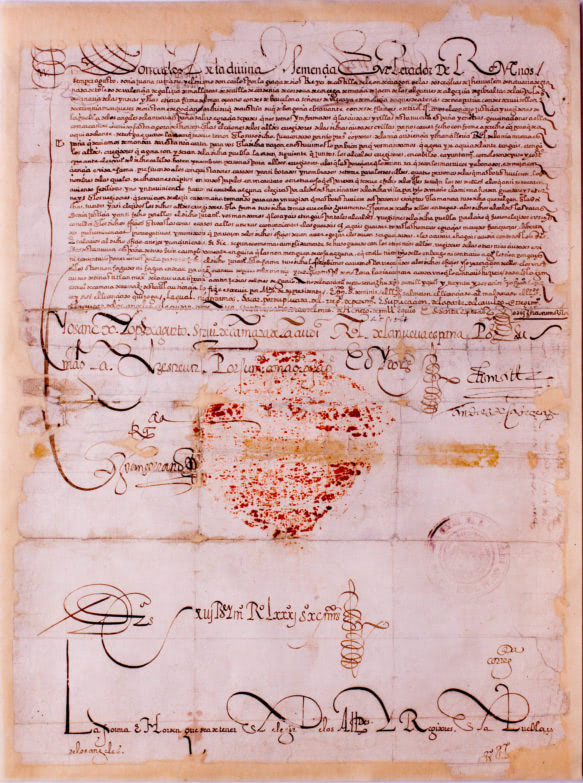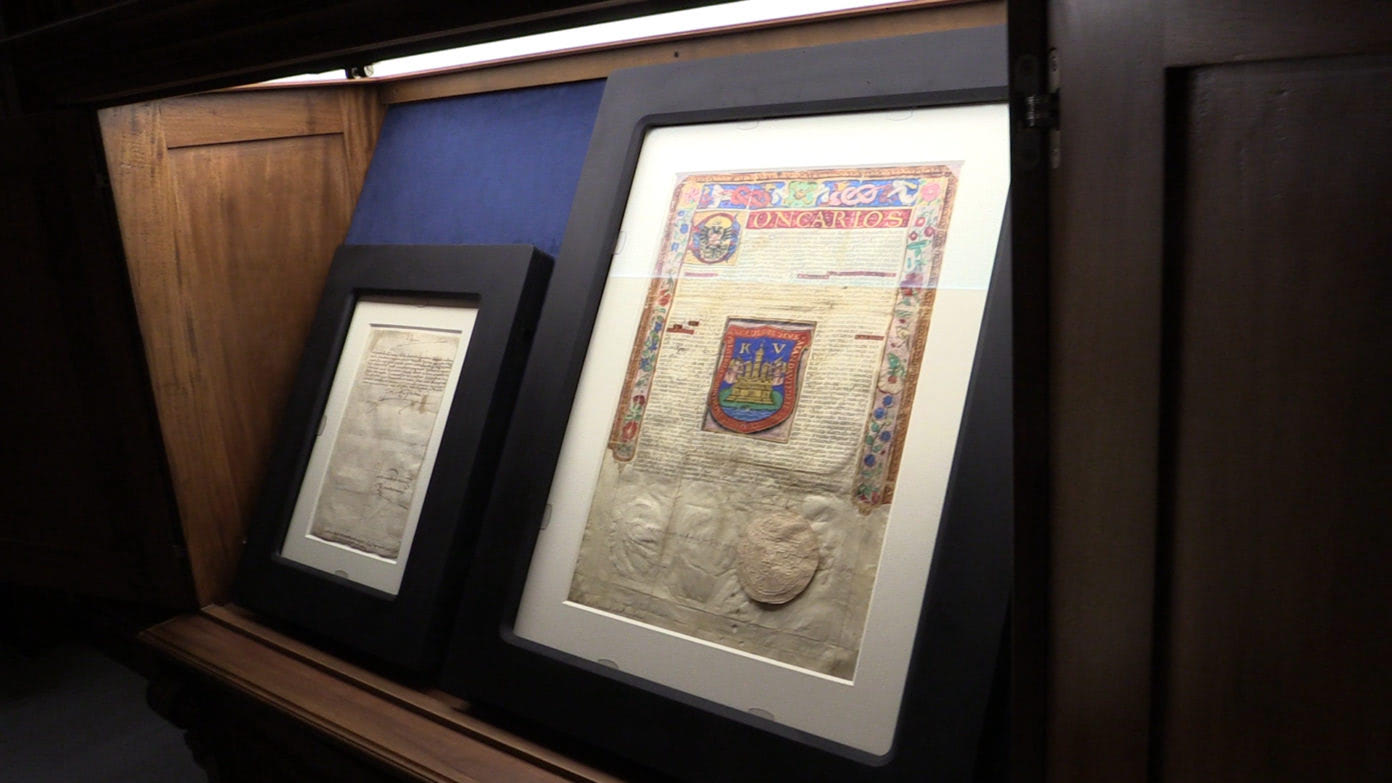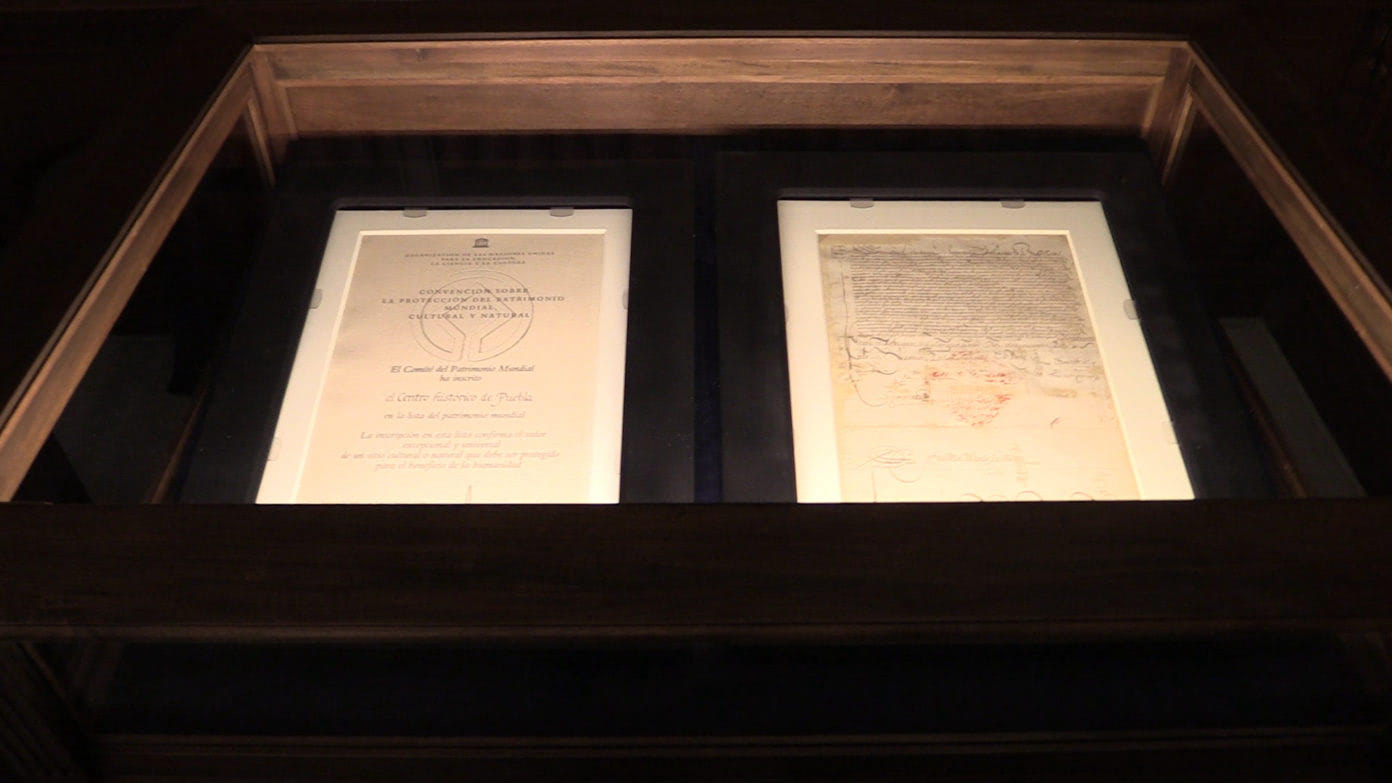The Challenge
- To protect highly light sensitive 16th century illuminated manuscripts during permanent display.
The Solution
Construction of tarebox® microclimate frames with Optium Museum Acrylic® and display cases made with UltraVue® Laminated Glass.
Sealed display enclosure
Tarebox® microclimate frames using Optium Museum Acrylic® were designed to help buffer environmental fluctuations, sealing the artifact within its own environment. The frames are placed in display cases made with UltraVue® Laminated Glass.
Anti-reflective
The anti-reflective properties of Optium Museum Acrylic® and UltraVue® Laminated Glass cut light reflections down to 1.6% and 1% respectively, compared to 8% with standard glass. This allows viewers to see the documents without distracting reflections.
Safety & Security
Optium Museum Acrylic® is shatter resistant. If UltraVue® Laminated Glass breaks, shards remain in place to safeguard against injury and damage until the glass is replaced. This product is ideal for valuable works, high traffic areas, and public event spaces.
The Work
Established in 1531, Puebla, a Baroque architectural blend of American and European styles, is situated at the foot of the majestic Popocatepetl volcano between Mexico City and the Port of Veracruz, and has been a crossroads for both commerce and culture. Its historic center was designated a UNESCO Heritage Site in 1987 and its founding documents joined UNESCO’s Memory of the World in 2015.
More Info
- Learn more about the documents and the display design in QuickVue
- Display case design and fabrication by EX-LIBRIS®
- Microclimate case design and fabrication by tarebox®
